
Sheep
Sheep
Sheep
Sheep have been kept by humans for about 10,000 years and have been an indispensable animal for human clothing, food and shelter since ancient times. Although fluffy sheep are often thought of as gentle, kind, timid and obedient, there are also wild sheep that defy such images! Let’s take a look at the world of sheep that is full of surprises but is also familiar.
Sheep Basic Infomation
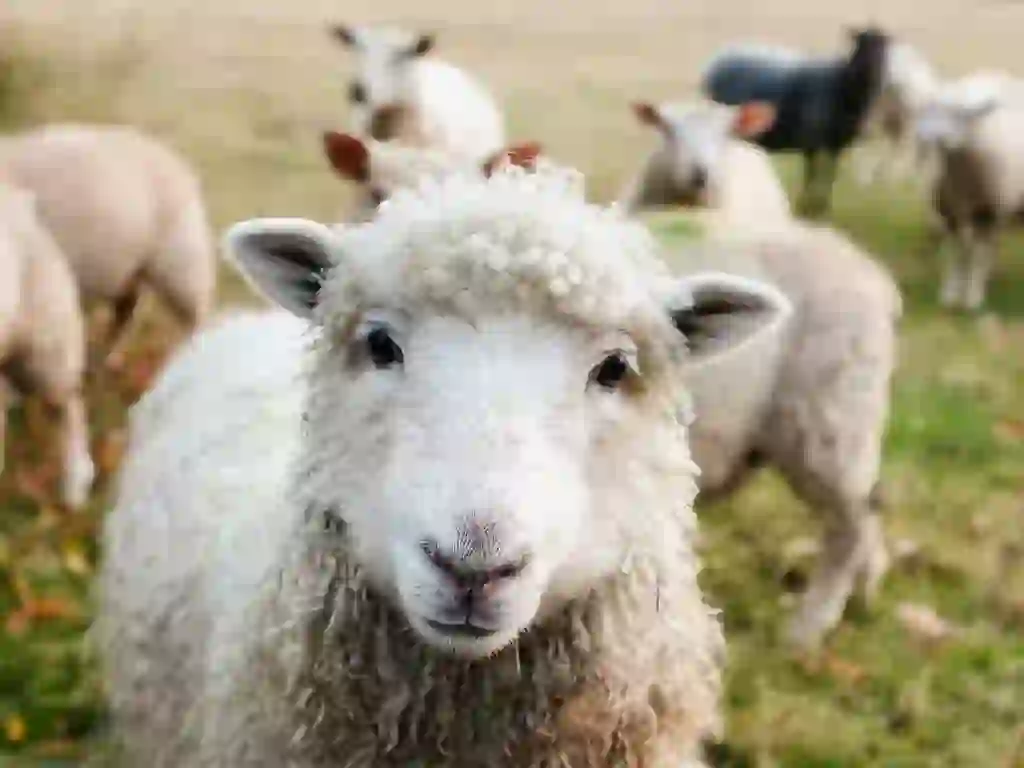
Mammalia-Artiodactyla-Bovidae-Caprinae-Sheep genus.
Sheep belonging to the goat subfamily are very similar to goats. Goats have 60 chromosomes, while wild sheep have 54-58 chromosomes and domesticated sheep have 54 chromosomes. There are also hybrid wild sheep with 55 or 57 chromosomes. Sheep weigh differently depending on the species, with some weighing as little as 45 kg and others weighing up to 160 kg. Sheep are social animals that follow a leader, and it is believed that they were domesticated around 9,000-8,000 BC.
Sheep Q&A

How many different sheep are there?
There are domesticated sheep that humans have been breeding for a long time and wild sheep that have not been domesticated. Domesticated sheep have over 1000 breeds. Wild sheep such as “bighorn,” “argali,” “urial,” and “mouflon” are known, and each is considered to be the ancestor of domesticated sheep.
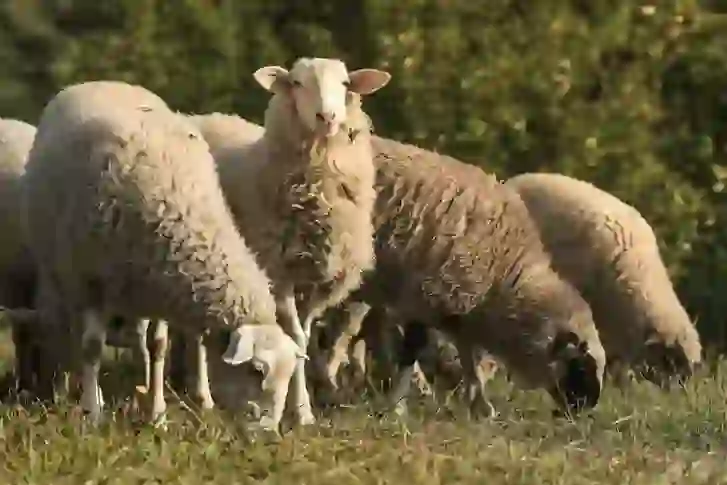
What kind of sheep are wild sheep?
Wild sheep include the bighorn (American bighorn, Dall bighorn, Siberian bighorn) that are distributed in Siberia, Alaska, Canada, and the United States. The argali is distributed in Afghanistan, India, Nepal, Mongolia, China, Russia, etc. There are urials that are distributed in the Kashmir region of India and Pakistan. Mouflon is distributed in Armenia, Iran, Turkey, etc. Barbary sheep (not in the sheep genus but in the Barbary sheep genus) are distributed in semi-desert areas of northern Africa.
Classification of wild sheep. Bighorn. Although sheep are often thought of as gentle and weak animals, wild sheep are also magnificent in appearance! Male bighorns have large horns that can weigh up to 15kg and are curled as their name suggests. Males use these horns to fight fiercely over territory and females. When two males stand up on their hind legs, they collide at speeds of up to 30 km/h until one of them loses and runs away.
Mouflon -endangered species. It is believed to be one of the ancestors of domesticated sheep and is the smallest species of wild sheep, weighing about 25kg~55kg. It inhabits mountainous areas above 5,000m in elevation, cliffs and rocky areas, and feeds on grasses, leaves of trees, fruits, bark and other vegetation.
Barbary Sheep -endangered species. It is also called “mane sheep” because it has long mane-like hair. It is resistant to dryness and lives on rocky terrain. Although it is written as “sheep”, it has characteristics of goats and can also give birth to offspring with goats. However, because its chromosomes are closer to those of sheep, it does not belong to either the goat or sheep family and is classified as the “Barbary Sheep” genus.
Argali. The argali is the largest species of sheep, reaching a body length of 180-200 cm and a weight of 95-180 kg. Both males and females have a pair of horns on either side, with the male’s horns being huge and twisting outward as they grow.
Uriau -endangered species. A wild sheep that inhabits mountainous areas such as India, Pakistan, and eastern Iran. It has long horns that are about 50-100 cm long and make an arc almost one turn.
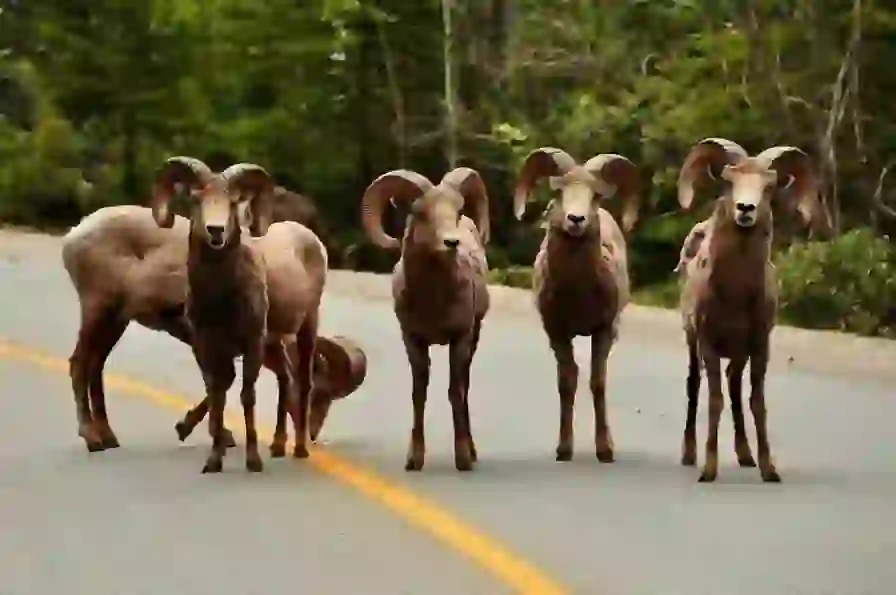
Why are sheep's pupils horizontal?
Herbivorous animals such as sheep, horses, and camels have eyes on the side of their faces. This is because they need to be able to see over wide grasslands. Animals with eyes on the sides of their faces can see almost 360 degrees around them. They have horizontal pupils that allow them to maintain a wide field of vision even when they squint in bright light. This makes it easier for them to spot predators while eating grass and to escape from them.
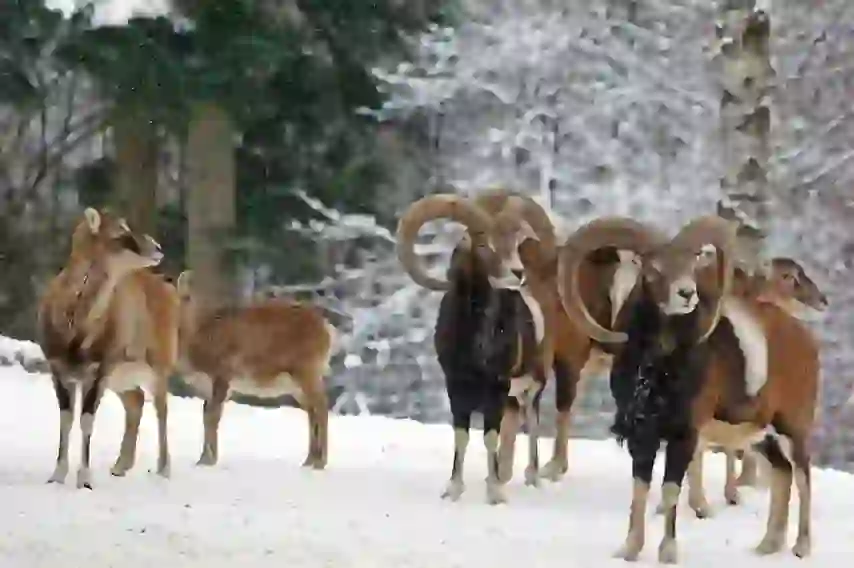
Are sheep teeth different from human teeth?
Ruminants such as sheep and cows do not have upper front teeth. However, they do have molars on both the top and bottom. This is because they have a mouth that is convenient for eating grass. Instead of upper front teeth, the upper gums of ruminants are very hard . This dental pad acts like a cutting board, while the lower teeth act like knives. They eat grass skillfully by rolling it up with their tongue and cutting it with their lower front teeth against the dental pad. They then crush it with their molars on both the top and bottom and swallow it to ruminate.
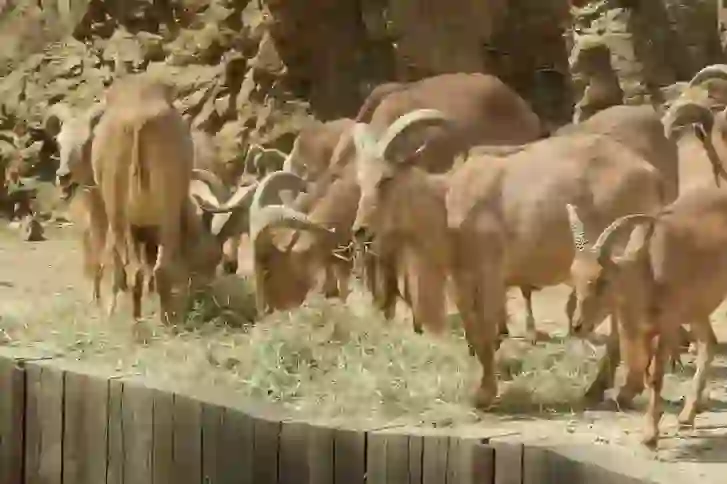
What is rumination when sheep eat grass?
Ruminants have four stomachs. This stomach and the way of eating called “rumination” can take in nutrients from grass that cannot be digested by humans, make the body bigger, and produce delicious milk with high nutritional value. Rumination is the process of swallowing food once and then returning it to the mouth for re-chewing. Even when sheep are not eating grass, they are chewing because they are ruminating.

Why do sheep have four stomachs?
Ruminants such as sheep and cows have four stomachs to effectively take in nutrients from grass that cannot be broken down and absorbed as is. The grass that has been chewed in the mouth is first sent to the first stomach where it is mixed and fermented and decomposed by microorganisms. This first stomach is about 80% of the entire four stomachs, like a fermentation tank. The grass that has been fermented and decomposed in this first stomach is sent to the second stomach, returned to the mouth by the contraction of the second stomach, and chewed again. After repeating this several times, the finely chopped grass is filtered in the third stomach, which acts as a filter to remove excess water, etc., and finally sent to the fourth stomach with digestive function similar to that of humans. By the way, “Mino”, “Hachinosu”, “Senmai”, “Aka Senmai (Giyara)”, etc., which are eaten at yakiniku restaurants, are the first through fourth stomachs of cows and sheep.
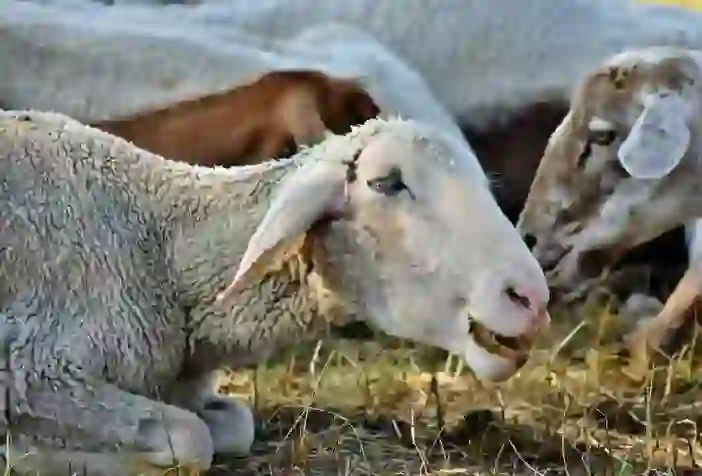
Do sheep have tails?
When you see a sheep at a zoo or ranch, it looks like it doesn’t have a tail. But it does have a tail… However, the tail is cut off about one week to ten days after birth. Why? You might think it’s cruel, but it’s for the health of the sheep.
In the history of domestication, the movement of the tail of the sheep has become sluggish. Therefore, they cannot drive away insects with their tails like other animals. The tail can become dirty with feces and urine, which can lead to unsanitary conditions and insect infestations. It can also interfere with mating, so tail docking has become common.
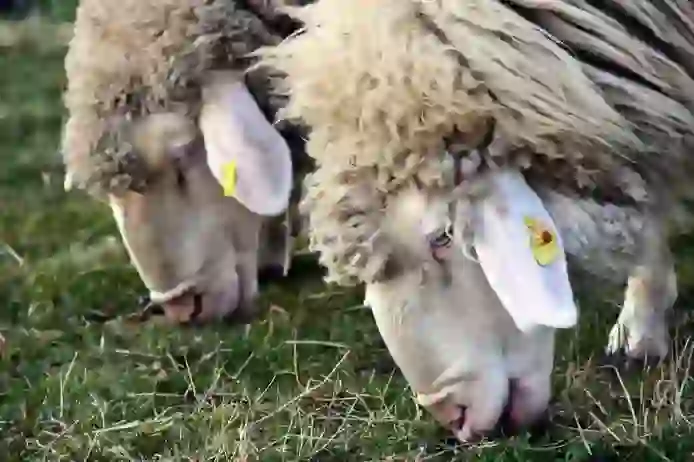
What kind of claws are sheep claws?
Even sheep, which are cloven-hoofed animals, have two divided hooves. Unlike humans, the hooves of animals have capillaries running through them. If the hooves become ingrown due to not being clipped and become “ingrown toenails,” it can cause injury to the foot and lead to bacterial infection. Therefore, clipping is an essential part of health care. Clipping sheep’s hooves is called “hoof trimming”.
Sheep’s hooves are also called “golden hooves.” This is because the fields and mountains where sheep are released eventually become fertile land. By sowing grass seeds and having sheep walk on them with their hooves, the seeds are well planted. In addition, as sheep walk around and defecate, it becomes fertilizer and the land becomes good pasture.

What kind of horns are sheep horns?
Animals with horns include five species: deer, cattle, pronghorn, giraffe, and rhinoceros. The horns of cattle, including sheep, are called hollow horns. They are covered with a horny sheath on the protrusion of the skull and continue to grow throughout their lives without changing. On the other hand, deer antlers are called branched antlers and are made of bone on the base of the skull and grow every year. Deer antlers grow only in males except for reindeer, but cattle horns including sheep grow in both males and females except for some exceptions. Sheep’s horns are divided into two types: “Lassen horns” (straight and straight like a drill while winding) and “Amon horns” (round and curled). Most species have two horns, one on each side, but some species have two to three horns on each side or four to six horns. The species with four horns is the Jacob sheep, and the species with four to six horns is the Manx Loaghtan.
Sheep’s horns are made of bones and have blood vessels inside. They are warm to the touch. Once sheep’s horns grow, they do not grow back. Some domesticated species have been degraded during the breeding process.
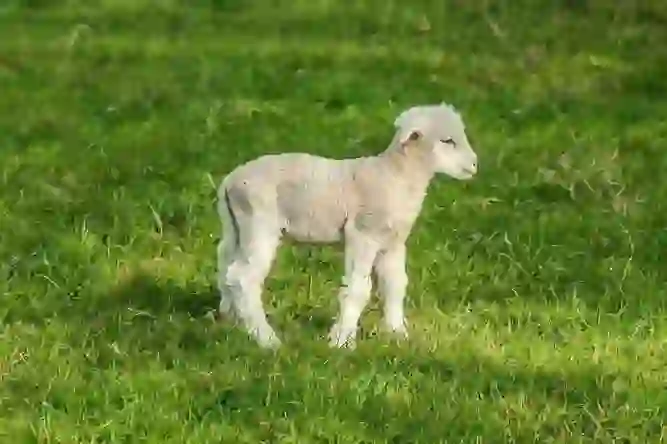
Why is sheep hair feathery?
Sheep originally were animals that could naturally shed their wool and regulate their body temperature. However, as they were domesticated, they were improved to produce more wool and most types of sheep now have wool that continues to grow without shedding. Sheep before shearing are cute and fluffy! However, wild sheep do not have as much fluffy wool as domesticated sheep and do not need to be sheared because they shed before summer.

What happens to sheep if they are not sheared?
Domesticated sheep need to be sheared 1-2 times a year to regulate their body temperature. If they are not sheared, they cannot regulate their body temperature and may have difficulty excreting waste or walking. Shearing is essential for domesticated sheep. What happens if you don’t shear them? There have been some news cases. For example, Shrek (a Merino breed) from New Zealand who ran away because he disliked shearing and was found six years later with a huge clump of fur, and Chris (a Merino breed) from Australia who was found with too heavy hair to walk. Both sheep had lost their freedom due to their overgrown wool and were in danger of losing their lives. It’s good that they were found safely! By the way, Chris set the Guinness World Record for the most wool in 2015.
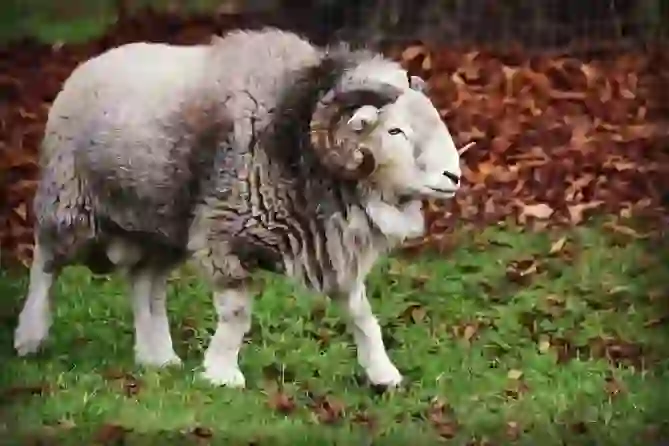
Why do sheep form herds?
In nature, various creatures such as insects, fish, and animals live in groups. There are various reasons why living things form groups. Sheep are also a representative animal that forms groups. There are various reasons why sheep form groups, such as being timid or reducing the risk of becoming prey for carnivorous animals such as wolves by forming groups.

When did humans start keeping sheep?
Domestication of sheep and goats is considered to be the second oldest after dogs, dating back to around 8000-7000 BC. Many small sheep bones that are different from wild ones have been excavated from ancient Mesopotamian ruins around 7000-6000 BC, which are considered evidence of sheep domestication. Sheep have a nature of forming groups and following leaders, and have been domesticated since ancient times by utilizing this nature.
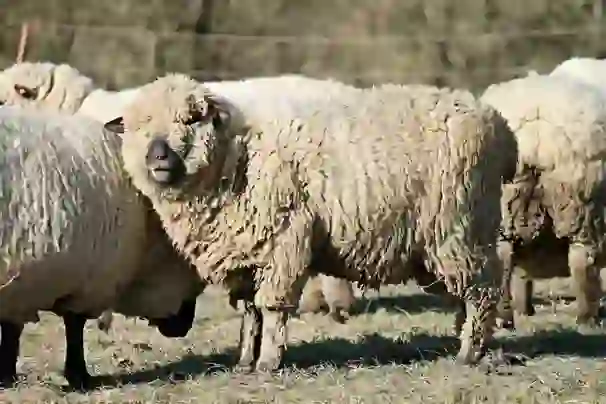
Have there been sheep in Japan since ancient times?
No, there are no native sheep in Japan. Cows and horses were introduced during the Jomon and Yayoi periods and interbred to create native breeds. However, the oldest confirmed record of sheep in Japan is in the “Nihon Shoki”, which describes “two sheep offered from Baekje in 599”. Sheep were also given as gifts from Silla, Tang, and Song in 820, 935, and 1077, but were not domesticated.
Sheep have been domesticated since ancient times in Europe, the Middle East, Asia and other parts of the world, but sheep were introduced to Japan as livestock in 1805. Masasada Naruse of the Edo shogunate Nagasaki Bugyosho tried to import sheep and raise them but failed. In 1817, the herbalist Chohaku Shibue raised a breed of sheep called Men-yo in his herb garden. The full-scale breeding of sheep began with the work of Toshitomo Okubo, the Minister of Home Affairs at the time, who established Japan’s first “sheep farm (Shimosa Sheep Farm)” in Tomisato City, Jukura and Goryo in 1875.
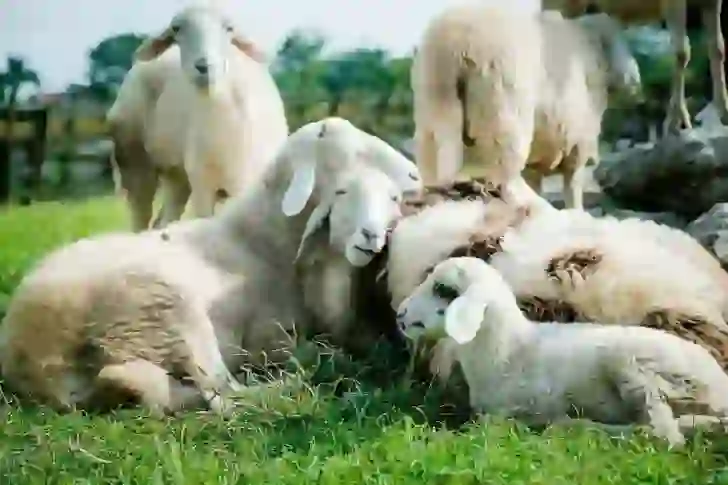
Type of domesticated sheep.
Wool breed. ・Spanish Merino. ・Rambouillet Merino. ・Australian Merino. Meat breed. ・Southdown. ・Suffolk. ・Cheviot. For hair and meat. ・Corriedale. Fur species. ・Romanov. Many others.

Would you like to become a part of the 'Animalbook.jp'?
Turn your knowledge into Q&A and share it with the world. ※Publication will be activated after purchase. Let's share information together!
Sheep Type of List
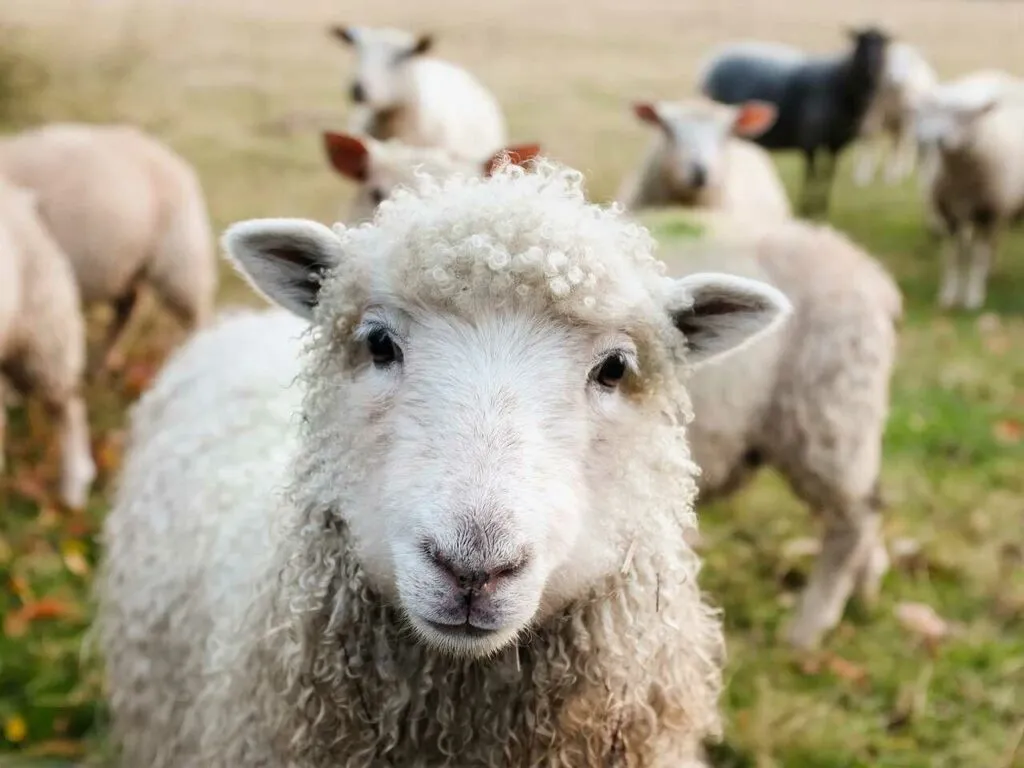
- Sheep
Information
Congratulations! You are the first commenter!

Create Your Favorite List!
Sheep
Save the animals you love! Build your own list to quickly revisit your favorites later.

Would you like to leave a comment?
※Please note: This is for the purchase of rights to post comments within the article.
Find Your Favorites!
Our shop offers a unique and attractive selection of goods themed around various animals.
Sheep References

- ウィキペディア フリー百科事典 https://ja.wikipedia.org/wiki/ヒツジ
- Best Wool club https://www.bestwool.jp/secret/
- CNNニュース https://www.cnn.co.jp/fringe/35069920.html
- NZ便利帳 https://nzbenricho.com/island-of-sheep/
- 茶路めん羊牧場 http://charomen.com/index.html
- 季刊誌シープジャパン http://jlta.lin.gr.jp/publish/sheep/kiji/41_01.html
- 生き物NAVI https://livingthing.biz/archives/1872
- ナショナルジオグラフィック https://natgeo.nikkeibp.co.jp/nng/article/20141218/428882/
- 川西市歯科医師会 http://www.kda8020.com/kouhou/kouhou18.htm
- ジンギスカンweb http://www.29notoyo.co.jp/s-10-1.html
- NATURE &SCIENCE https://nature-and-science.jp/deer/#page-1
- 世界大博物図鑑 1988 平凡社
Sheep Introduction of media used
出典:https://pixabay.com/videos/id-27179/

出典:https://pixabay.com/images/id-1985088/

出典:https://pixabay.com/images/id-3530552/

出典:https://pixabay.com/images/id-1242801/

出典:https://pixabay.com/images/id-1975809/

出典:https://pixabay.com/images/id-4340052/

出典:https://pixabay.com/images/id-4143207/

出典:https://pixabay.com/images/id-4669161/

出典:https://pixabay.com/images/id-2131808/

出典:https://pixabay.com/images/id-4205854/

出典:https://pixabay.com/images/id-1398199/

出典:https://pixabay.com/images/id-707230/

出典:https://pixabay.com/images/id-3865018/

出典:https://pixabay.com/images/id-4893935/

出典:https://pixabay.com/images/id-3181546/

出典:https://pixabay.com/images/id-5352474/
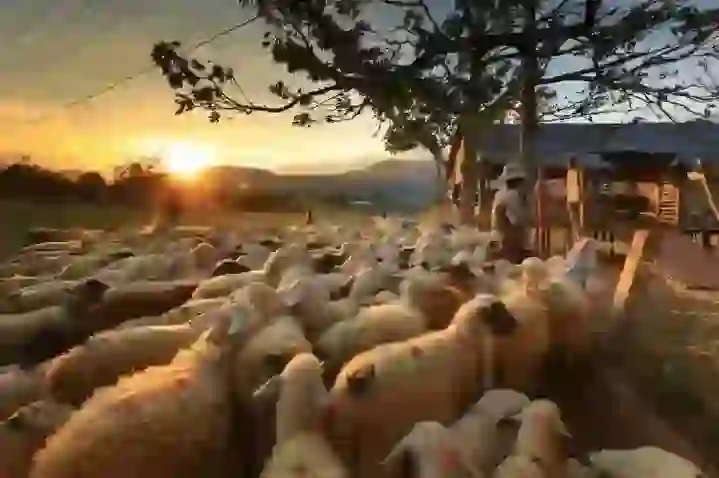
出典:https://pixabay.com/images/id-3023520/
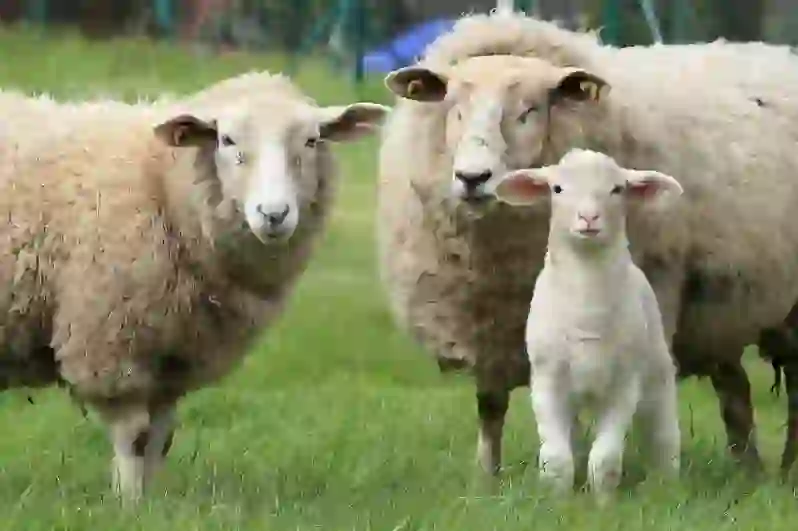
出典:https://pixabay.com/images/id-1547720/

Help Enrich Our Animalbook.jp with Your Media!
We are constantly looking to expand and enrich our Animalbook.jp with amazing photos and videos of animals. If you have any media that you'd like to share, please contribute and help us showcase the beauty and diversity of the animal kingdom. Your submissions will be credited and featured in our encyclopedia, reaching a wide audience of animal lovers.


















